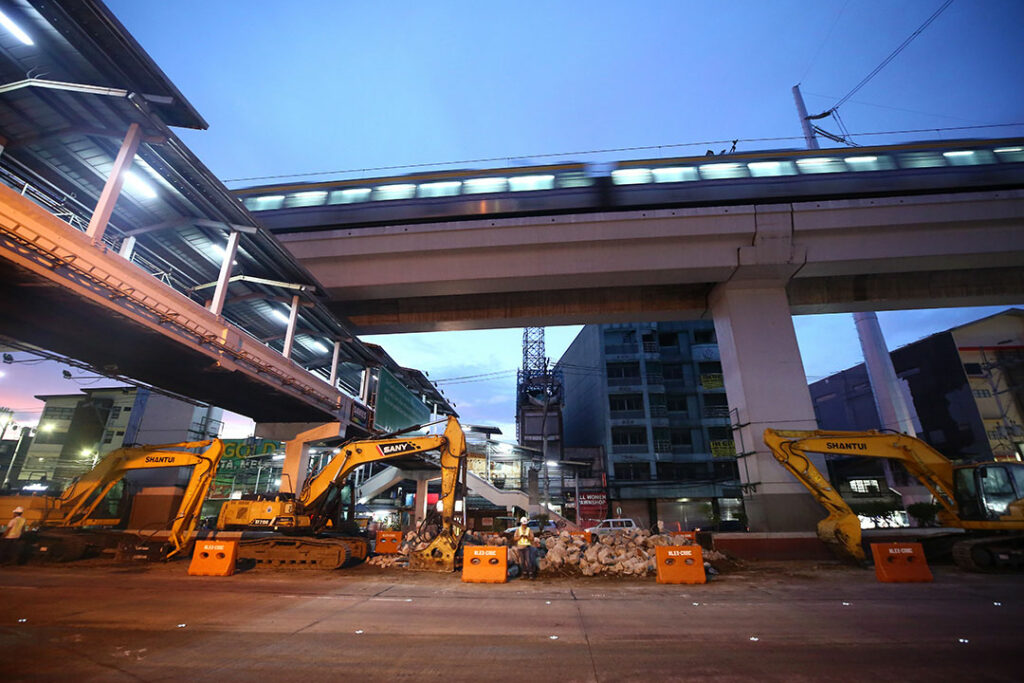




Quarterly Economic Growth Release: More BSP cuts to come
 DOWNLOAD
DOWNLOAD

Monthly Economic Update: Fed catches up
 DOWNLOAD
DOWNLOAD

Inflation Update: Steady and mellow
 DOWNLOAD
DOWNLOAD


Infrastructure spending jumps in April

Infrastructure spending jumped in April amid the continued implementation of projects, the Department of Budget and Management (DBM) reported.
Infrastructure and other capital outlays rose by 36.2% to PHP 118.9 billion in April from PHP 87.3 billion in the same month a year ago, according to the latest National Government disbursement report.
Month on month, infrastructure spending rose by 23.5% from the PHP 96.3 billion recorded in March.
“The strong infrastructure spending performance was largely on account of the implementation of infrastructure projects of the Department of Public Works and Highways (DPWH), such as the construction, repair and rehabilitation of roads, bridges, and flood control structures; and the construction of administrative, hospital, and multi-purpose buildings,” the DBM said.
The DBM also cited the release of local counterpart funds for Department of Transportation foreign-assisted projects and the implementation of capital outlay projects under the Revised Armed Forces of the Philippines Modernization Program.
For the first four months of the year, infrastructure spending increased by 18.2% to PHP 335.7 billion from PHP 284 billion in the year-ago period.
The DBM said that higher spending in the January-to-April period was due to the implementation of various road infrastructure programs and defense modernization projects of the DPWH and Department of National Defense, respectively.
In the January-April period, overall infrastructure disbursements rose by 18.1% to PHP 409.7 billion from PHP 346.9 billion.
Rizal Commercial Banking Corp. Chief Economist Michael L. Ricafort said in a Viber message that the higher spending in the first four months may be due to the lower base effects as the government suffered from underspending a year ago.
In the second quarter of last year, government spending contracted by 7.1%, bringing down overall gross domestic product (GDP) for the quarter to 4.3%. This as state agencies were flagged due to low budget utilization.
Mr. Ricafort also noted the government’s push for accelerated government spending would help drive economic growth.
“For the coming months, preparations for the May 2025 midterm elections could lead to more and faster government spending on various projects and programs, including infrastructure, before the election ban, thereby could lead to faster growth in infrastructure spending, going forward,” he said.
The midterm elections in May 2025 will have Filipinos voting for key positions such as 12 of the 24 Senate seats. Other positions include congressmen, governor, mayors, and village captains, among others.
The government is planning to spend 5-6% of GDP on infrastructure annually until 2028.
According to the latest Development Budget Coordination Committee data, this year’s infrastructure program is set at 5.6% of GDP.
Infrastructure is one of the administration’s priority investment areas. The government’s list of infrastructure flagship projects currently stands at 185 with a total value of PHP 9.54 trillion. — Luisa Maria Jacinta C. Jocson
This article originally appeared on bworldonline.com





 By BusinessWorld
By BusinessWorld